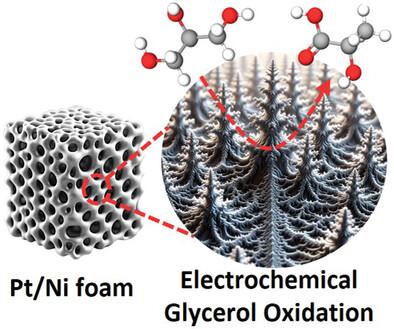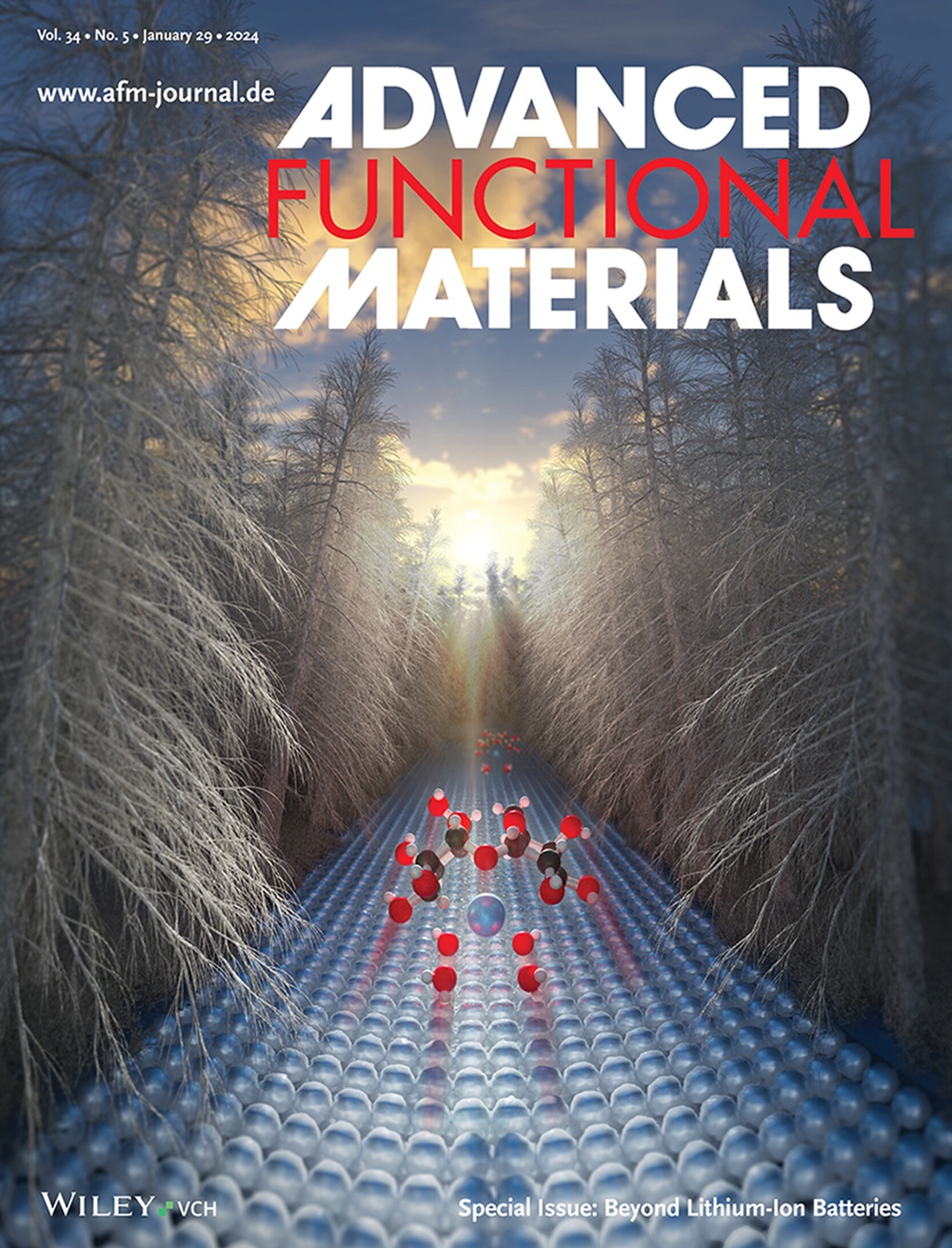3D Bimetallic Platinum-Nickel Electrodes for Electro-Oxidation of Glycerol at Ambient Conditions
IF 18.5
1区 材料科学
Q1 CHEMISTRY, MULTIDISCIPLINARY
引用次数: 0
Abstract
Partial electro-oxidation using renewable electricity offers a sustainable route for valorizing glycerol, a major by-product of biofuel production. This study introduces a bimetallic electrode with nanostructured platinum dendrites on nickel foam (Pt/NiF), achieving a peak geometric current density of 235 mA cm−2 and a Pt-mass normalized current density of 3.71 for glycerol electro-oxidation at 0.92 V versus a reversible hydrogen electrode (RHE) in 3 m KOH electrolyte containing 1 m glycerol, outperforming most previously reported Pt-containing catalysts. The Pt/NiF electrode demonstrates over 92% cumulative selectivity toward C3 products, with 64% selectivity for lactic acid at 0.65 V versus RHE over 5 h of testing. This research also highlights the role of chemical oxidation pathways (isomerization and rearrangements) in converting glycerol to lactic acid. After 5 h at 0.65 V versus RHE, the Pt/NiF electrode maintains 35% of its initial current density, plateauing at 12.2 mA cm−2 (0.15 ), with performance loss likely due to surface poisoning by carbon-based reaction intermediates/byproducts or passivating platinum (hydr)oxide species. These findings pave the way for developing low-platinum group metal catalysts with high glycerol oxidation affinity and highlight the importance of considering chemical transformations during catalyst evaluation and reactor design.

用于在环境条件下电解氧化甘油的 3D 双金属铂镍电极
利用可再生电力进行部分电氧化为生物燃料生产的主要副产品甘油的价值化提供了一条可持续的途径。本研究介绍了一种在泡沫镍(Pt/NiF)上具有纳米结构铂树枝状突起的双金属电极,其峰值几何电流密度为 235 mA cm-2,铂质量归一化电流密度为 3.71 AmgPt-1$ {{mathrm{A\mg}}_{{\mathrm{Pt}}^{ - {\mathrm{1}}$ 在 0.92 V 的电压下与含有 1 m 甘油的 3 m KOH 电解液中的可逆氢电极 (RHE) 相比,甘油电氧化的电流密度达到了 3.71 AmgPt-1${{mathrm{A/mg}}_{{\mathrm{Pt}}}^{ - {\mathrm{1}}$ ,优于之前报道的大多数含铂催化剂。在 5 小时的测试中,Pt/NiF 电极对 C3 产物的累积选择性超过 92%,在 0.65 V 的电压下,乳酸对 RHE 的选择性为 64%。这项研究还强调了化学氧化途径(异构化和重排)在甘油转化为乳酸过程中的作用。在 0.65 V(相对于 RHE)电压下测试 5 小时后,Pt/NiF 电极的电流密度保持在初始值的 35%,稳定在 12.2 mA cm-2(0.15 AmgPt-1$ {{mathrm{A\mg}}_{{\mathrm{Pt}}^{ - {\mathrm{1}}}$)。这些发现为开发具有高甘油氧化亲和力的低铂族金属催化剂铺平了道路,并强调了在催化剂评估和反应器设计过程中考虑化学转化的重要性。
本文章由计算机程序翻译,如有差异,请以英文原文为准。
求助全文
约1分钟内获得全文
求助全文
来源期刊

Advanced Functional Materials
工程技术-材料科学:综合
CiteScore
29.50
自引率
4.20%
发文量
2086
审稿时长
2.1 months
期刊介绍:
Firmly established as a top-tier materials science journal, Advanced Functional Materials reports breakthrough research in all aspects of materials science, including nanotechnology, chemistry, physics, and biology every week.
Advanced Functional Materials is known for its rapid and fair peer review, quality content, and high impact, making it the first choice of the international materials science community.
 求助内容:
求助内容: 应助结果提醒方式:
应助结果提醒方式:


